This review page is supported in part by the sponsors whose ad banners are displayed below |
 |
 |
 |
The unquestionably greatest most important audio discovery of the year came by way of Nelson Pass and his silicon-carbide based static induction transistor amp called FirstWatt SIT2. Single stage + zero feedback + zero degeneration + class A, this $5.000 10wpc SETransistor amp showcased the maestro's custom power JFET commissioned from US supplier SemiSouth. Exhibiting true triode curves, it's a solid-state output device radically new to audio applications. Though it shares conceptual details with vertical power JFETs from Sony and Yamaha which date back to the 1970s and one contemporary parallel with Kazuhiko Nishi's Digital DoMain amp from Japan, nothing like it has ever appeared in as minimalist/purist a commercial hifi amplifier before. |
|
|
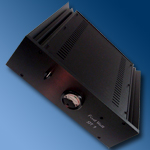 FirstWatt SIT1 FirstWatt SIT1 |
|
The SIT2 combines extraordinary resolution with true deep-space soundstaging and a superbly elucidated ultra refined treble. It's very fast, immediate and lucid. It's a serious competitor to advanced triode amps of Berning Siegfried and Trafomatic Vilobha caliber. It's more direct and open but trades those attributes against elasticity and harmonic elegance where SOTA triode amps still rule. For speakers of copasetic sensitivity and load behavior and without the maintenance/cost issues of exotic triodes, the FirstWatt SIT2 goes places where transistors haven't gone before |
|
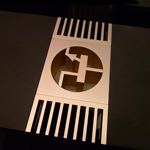 Digital DoMain heatsink Digital DoMain heatsink |
|
Forthcoming in Q1 of this year, the $10.000/pr companion monoblocks will be more radical yet*. They will limit themselves to just one active device per channel where the SIT2 uses one transistor to bias the output transistor (below). They will also sport a bias meter with trim pot to tweak the static induction transistor's load line behavior to the loudspeaker.
________________________________
* "After an initial prototype run of SIT-2s and SIT-1s I decided to add a feature which is a switchable input impedance of 10K and 100K. The piece you listened to had a nominal 47Ks but the junction capacitance of the SIT device doesn't allow full bandwidth to be displayed with sources that have a high output impedance (read: tubes without cathode followers or 'passive preamps). Where this could be an issue, the 100K setting buffers that out and retains the output device's 500kHz bandwidth you can get with low impedance SS preamps." - np
|
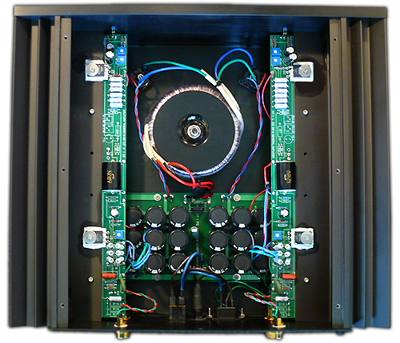 SIT2 prototype as reviewed
SIT2 prototype as reviewed |
|
With a buy-in requirement of $300.000+ for the first run of raw parts (would they prove to be worth that risk?); and a year's worth of R&D to examine their behavior and learn to deploy circuitry that would maximally exploit it; Mr. Pass still decided against pursuing trophy hifi pricing.
|
 Nelson Pass
Nelson Pass |
The SIT amps thus share the plain cosmetics of previous FirstWatt amplifiers. |
|
|
On that front nothing gives away the advanced parts inside. Even opened up nothing indicates the mastery required to trim back complexity and eliminate ubiquitous compensation solutions to arrive at a purist, stable and repeatable circuit that celebrates less is more to an extreme extent. It does so not for novelty's sake but for demonstrable performance. If you've belaboured that there's nothing new under the hifi sun where transistor amps are concerned, the SIT models from Nelson Pass will have you think again. This is the type of discovery which continues to turn the wheel of our audio dharma. While my SIT2 review loaner is bound for a return to its maker, a pair of personal SIT1 monos are on order from the first formal production run. Who needs triodes when transistors finally exhibit identical curves; when transistors allow for simpler quieter lower-distortion circuits; when comparable tube amps could easily demand four times the money; and when such tube amps will always suffer the performance variability of valve aging and the potential for sudden valve death?
|
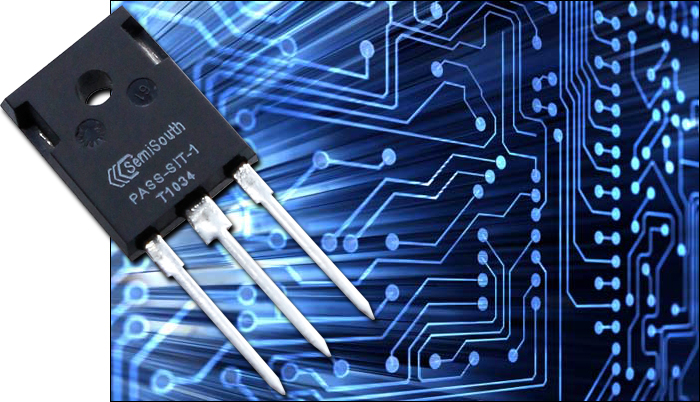 |
It takes curiosity, generosity and passion to envision, pursue, develop and offer something like these SIT amps. Exploring uncharted terrain and new if expensive manufacturing techniques from outside the audio industry—here military radar applications—is what it takes to advance our arts. Few would argue that Nelson Pass has always thought outside the box but fewer might have expected that he would commission and underwrite an entirely new output device. In the nearly drab-looking SIT2, the triode transistor now lives. And it performs at a spectacular level if ten 8-ohm watts (down to a measly eight into four) will have your speakers blossom.
|
|
|
|
 |
Since this is the space for unapologetically personal favorites, my next highlight of the year is my new DAC/headphone amp from April Music's Simon Lee. Called the Eximus DP-1, this $2.995 crazily well-finished small box merely lacks remote to take its integral preamp functionality to the very top. There's an XMOS-based async USB transceiver, dedicated clocks for the 44.1/48kHz families of sampling frequencies, BB 1794A chips, user-selectable upsampling including defeat and balanced class A circuitry. A very useful feature for headfi is the analog bass-boost switch simply called filter. It makes a terrific difference to soundstaging and ambiance retrieval inside one's skull. For an overachieving bedside table system, consider Pure's i20 or Cambridge Audio's ID100 digital iPod dock with a 160GB classic iPod loaded with uncompressed files. Add the DP1 and my favorite Audez'e LCD-2 planar-magnetic headphones with ALO Audio wire harness. |
|
|
 |
Very trick! In the big system the DP1 outclasses my Weiss DAC2 and Antelope Audio Zodiac Gold/Voltikus to be my go-to converter for 'heavy-duty' assignments. When in the wake of my report Doug Schneider reviewed the DP1 for SoundStage!, he came to very similar conclusions to award it their Reviewer's Choice distinction. Unless you're keen to spend a lot more, Simon Lee's first model in his new top-line Eximus range is all upscale listeners—with €20.000/pr speakers to create the intended context—need to have to do computer audio proper justice.
|
|
|
|
|
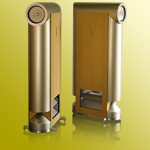 |
To complete a system with the above two components—minus my iMac or equivalent front end and cables—you'd need speakers. This gets us to my third, final and very smart favorite discovery of the year. At $8.450/pr, the Rethm Maarga from India is far from cheap. But it's got brains and beauty to make up. First off it's a 97dB widebander run full-range in a very narrow very stylish box. That means a low-power ultra sophisticated amp like the SIT2 is all you need and want. Second a pair of isobarically loaded woofers driven each from a channel of the built-in class A/B stereo custom amp with two choices of active low-pass setting and discrete volume control create integral stereo subwoofers which are perfectly matched to the non-Lowther custom Rethm widebanders. |
|
This nets truly fullrange sound whose bass power is adaptable to the room. It nets point-source zero filter soundstaging without phase shifts. It nets that very vital ability to sound coherent, intelligible and involving at the very low levels much of your—hoped for!—listening will make up outside the anything-goes interludes (this speaker will play plenty loud too!). The Maarga's compact dimensions and non-hifi appearance are added boons for real-world living rooms. The high-efficiency concept with integral auxiliary active subwoofers means that 2wpc flea-power amps of Yamamoto A-08S caliber are perfectly catered to. In my book this combination of virtues makes this Rethm speaker from faraway Kerala a very smart choice. It's exotic and won't be easily auditioned. But with a solid track record spanning 10 years of perfecting this concept, Rethm designer Jacob George has proven the staying power and engineering resources to cultivate the necessary customer trust for such a not inconsiderable investment.
April Music Eximus DP1 + FirstWatt SIT2 + Rethm Maarga... not only are these my favorite finds of 2011, they play together as a dream team. Which wasn't a hidden missive of this feature. It simply worked out that way. Sometimes you get lucky. I feel very lucky to have made the acquaintances of these players to be able to tell you about them!... |
|

|
 |